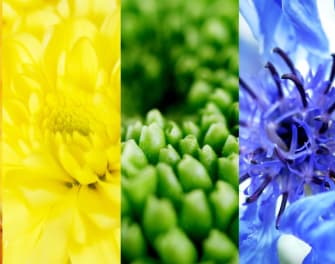
Did you know there are over 400,000 types of flowers in the world?
Unfortunately, you can't grow every species of flower in your garden. Not only because there isn't enough space in your garden.
But also due to the particular blooming season of each flower. Every flower flourishes in slightly different conditions.
Even though, there are types of plants that flourish no matter what the weather or climate. The flowering plants are usually seasonal flowers.
But when do flowers bloom?
Keep reading to find out the blooming season for a variety of flowers. Let's go!
Spring Flowers
For the right reasons, most people associate spring with a sense of new beginnings after the cold winter.
It's when many flowers have a growth spurt. It's a really beautiful time of year as your garden begins to show its color. That's why so many people choose to have weddings in the spring.
You also need to be aware that spring spans over a few months. Therefore, while some spring flowers won't bloom until the late spring others will be off to a start by late February.
For example, the Dutch crocus is an extremely fast-growing and early bloomer. By contrast, the six petaled Star of Bethlehem won't begin blooming until the very late period of spring.
But which flowers bloom in the spring? The following flowers, among many others, bloom in springtime.
- Roses
- Tulips
- Daffodils (also called narcissus or jonquils)
- Daisies
- Violets
- Lilacs
- Orchids
- Peonies
- Cherry Blossoms
- Poppies
- Lilies
- Dahlias
- Crocus (also called Dutch crocus)
- Star of Bethlehem
- Sweet Peas
If you're searching for flowering plants that really brighten up your garden in the spring, the above examples will be excellent additions to your flower bed.
Summer Flowers
It's not always easy to draw a clear line under spring. The two seasons nicely flow into one another.
That's why many flowers can be classified as spring or summer alone. For example, irises bloom between the late spring and early summer.
Besides, the above spring flowers won't decline during summer either. They'll continue to flourish in the warmer months of summer as well.
Many flowers show initial signs of bloom during the early spring but they will continue to bloom until late autumn. A perfect example of this is many kinds of lilies.
Many people associate the summer months with an easy time to maintain your garden. Even though this is definitely true, some flowers are particularly simple to grow while others are more demanding. For example, Zinnias are especially easy to maintain in any heat, whereas petunias require a little more effort.
Nevertheless, the summer season flowers include:
- Sunflowers
- Cosmos
- Gingers
- Freesias
- Hydrangeas
- Zinnias
- Petunias (include the categories of Grandiflora, multiflora, multiflora, and spreading petunias)
- Cockscomb
- Love-lies Bleeding (also called tassle flower)
- Periwinkle (also known as vincas)
In addition to the above examples, lilacs, irises, daisies, and lilies continue to bloom in summer and spring.
If you want to make the most of your garden in the warmest months of the year, it's important to plant the flowers that will bloom in the summer.
Autumn Flowers
Autumn is called fall for a reason. It's the season whereby the cycle of flowers blooming begins to decline. The brightness of the green of summer turns to the autumnal colors of orange, red and yellow.
However, there are a number of flowers that persist through summer to autumn. Despite its name, the sunflower flourishes in the autumn weather as much as in the warmer summer.
Examples of autumn flowers include the below:
- Marigolds (also known as African or American Marigolds)
- Carnations
- Chrysanthemums
- Goldenrod (over 50 different species)
- Alstroemeria
- Bouvardia
- Queen Anne's Lace
- Asters
- Colchicum (also called autumn crocos)
Among the fall flowers, there are the usual suspects that overcome the spring and summer into the autumn of roses, daisies, and lilies (especially the red spider lily).
You can find out more about how to make the most of your fall garden with our blog.
Winter Season Flowers
The other three seasons provide much better conditions for most flowers to flourish. But you might be surprised to discover that there are some exceptional flowers that bloom in the chilly winter months too.
Of course, the winter month of December is widely associated with the festive season. The flower that is most closely associated with the Christmas period is poinsettia. With its vibrant red petals, it's even nicknamed the "Christmas Star".
Other examples of winter flowers are the following:
- Amaryllis
- Winter Jasmine
- Pansy
- Cyclamen
- Violas
- Stock (Matthiola incana)
Many of these beautiful flowers can really provide color and light to your garden during the dark and dingy winter.
But don't forget that there some flowers that can withstand any conditions. For instance, roses can survive throughout the year.
Winter gardening can be really difficult if you're new to gardening. Doing a little research can help your winter garden bloom.
The Advantages of Seasonal Flowers
Every gardener prides him or herself on the health and vibrancy of their garden. That's why you want to make sure your garden flourishes during each season of the year.
By understanding which months provide different seasonal flowers with optimal growth, you can ensure that you can cultivate a beautiful garden throughout the year.
You can learn much more about the different varieties of flowers on our website. Do you have any other suggestions for flowers that flourish during particular seasons? Get in touch with us or leave us a comment below.
